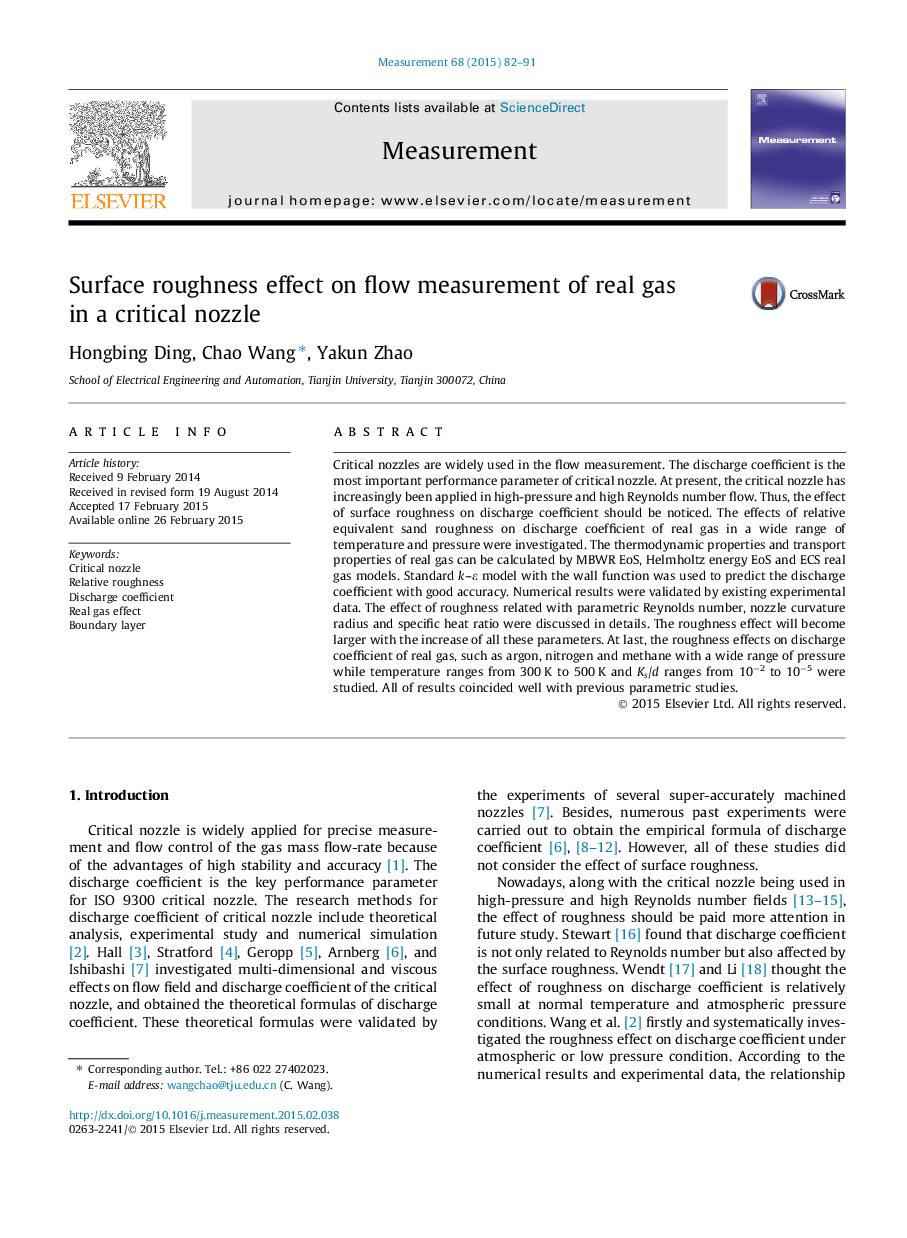| Article ID | Journal | Published Year | Pages | File Type |
|---|---|---|---|---|
| 7124442 | Measurement | 2015 | 10 Pages |
Abstract
Critical nozzles are widely used in the flow measurement. The discharge coefficient is the most important performance parameter of critical nozzle. At present, the critical nozzle has increasingly been applied in high-pressure and high Reynolds number flow. Thus, the effect of surface roughness on discharge coefficient should be noticed. The effects of relative equivalent sand roughness on discharge coefficient of real gas in a wide range of temperature and pressure were investigated. The thermodynamic properties and transport properties of real gas can be calculated by MBWR EoS, Helmholtz energy EoS and ECS real gas models. Standard k-ε model with the wall function was used to predict the discharge coefficient with good accuracy. Numerical results were validated by existing experimental data. The effect of roughness related with parametric Reynolds number, nozzle curvature radius and specific heat ratio were discussed in details. The roughness effect will become larger with the increase of all these parameters. At last, the roughness effects on discharge coefficient of real gas, such as argon, nitrogen and methane with a wide range of pressure while temperature ranges from 300 K to 500 K and Ks/d ranges from 10â2 to 10â5 were studied. All of results coincided well with previous parametric studies.
Related Topics
Physical Sciences and Engineering
Engineering
Control and Systems Engineering
Authors
Hongbing Ding, Chao Wang, Yakun Zhao,
